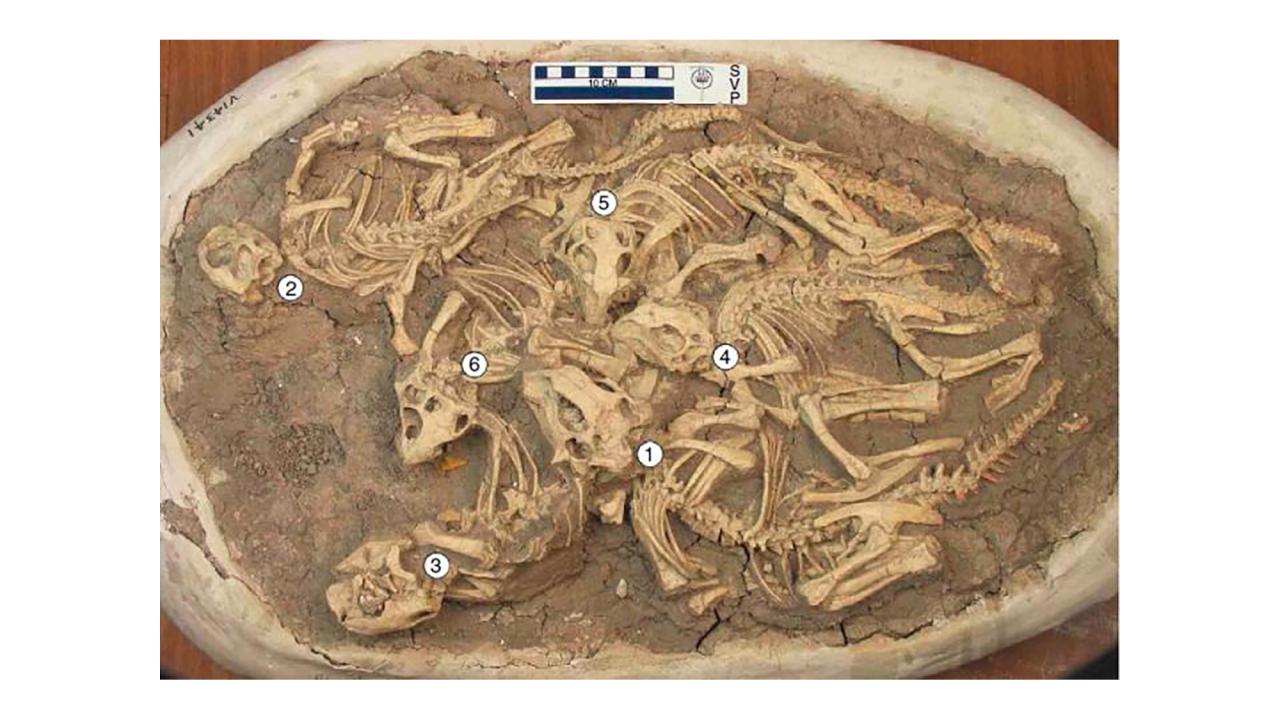Northeastern China is home to one of the world’s most remarkable collections of dinosaur fossils. The Jehol biota contains fossils of dinosaurs, plants, insects and fish, many of them preserved in unusual detail with traces of skin and feathers, dating back to the Early Cretaceous period 101 to 143 million years ago.
Some fossils are preserved in three dimensions in unusually life-like positions, earning the site the nickname of “Dinosaurs Pompeii.” Indeed, it’s likely that, just like in the Roman city, the animals were caught up in fast-moving streams of hot volcanic ash called pyroclastic flows. These killed the animals and swept them into lakes or riverbeds where they were buried in sediment.
The largest and most diverse collection of fossils in the Jehol Biota is the Yixian Formation in western Liaoning province. Within the Yixian Formation, the Lujiatan and Jianshangou units are the two most important collections of fossils. Until recently, it has not been clear if these fossil deposits are all from the same event or represent separate catastrophes.
Yuting Zhong and Yi-Gang Xu of the Chinese Academy of Sciences in Guangzhou worked with Professor Qing-Zhu Yin and Associate Specialist Magdalena Huyskens at the UC Davis Department of Earth and Planetary Sciences to get better dates for the fossil deposits. The work is published in National Science Review.
Measuring isotopes in zircons
Yin’s laboratory specializes in very accurate measurements of chemical isotopes, which can provide a clock for events in the deep past. The researchers measured uranium and lead isotopes in zircon crystals from the deposits. Zircons are formed in volcanic eruptions and can incorporate uranium into their structure, but not lead. Therefore any lead in the crystal must have come from decay of uranium, making it possible to measure the age of the zircon with high precision.
The results showed that they could put the duration of the Yixian Formation within about 1.6 million years, a much tighter estimate than previously possible. The formation of the Lujiatan unit is now within just 70,000 years, and the Jianshanguo unit was clearly distinct in time and more recent than the Lujiatan unit, showing that they must have been caused by separate eruptions.
The refined timing also has implications for climate cycles recorded in the Jianshanguo unit. Milankovich cycles are regular cyclic changes in the Earth’s orbit and orientation to the Sun that drive cycles of climate change and glaciation over hundreds of thousands or millions of years. There are three factors that contribute to Milankovich cycles: eccentricity, or the shape of the Earth’s orbit round the sun; obliquity, or how much the poles tilt away towards or away from the Sun; and precession, or the ‘wobble’ in the Earth’s axis as it rotates. The short duration of the Yixian Formation – less than two million years – rules out orbital eccentricity as a driving force. Precession is the most likely contributor to the climate cycles recorded in lake sediments in the formation.
Additional authors on the paper are Yaquiong Wang at the Chinese Academy of Sciences, Nanjing and Qiang Ma, China University of Geosciences, Wuhan. The work was funded by the National Natural Science Foundation of China and the Chinese Academy of Sciences.
Media Resources
High-Precision Geochronological Constraints on the Duration of ‘Dinosaurs Pompeii’ and the Yixian Formation (National Science Review)
Short duration of the Yixian Formation and ‘Chinese Dinosaurs Pompeii’ (Science China Press, via Eurekalert)
